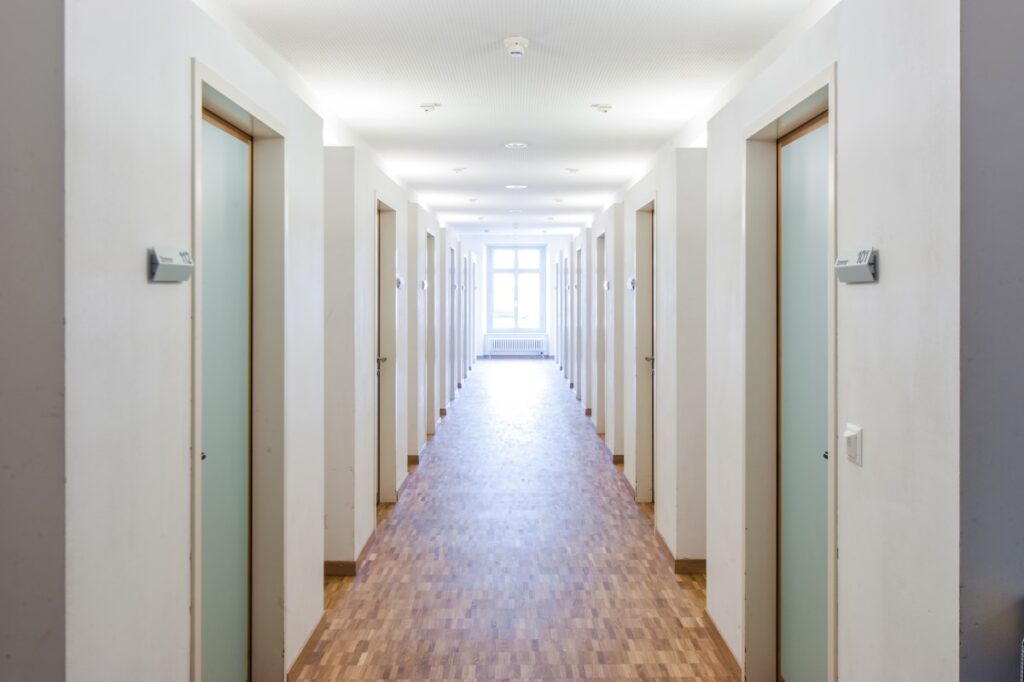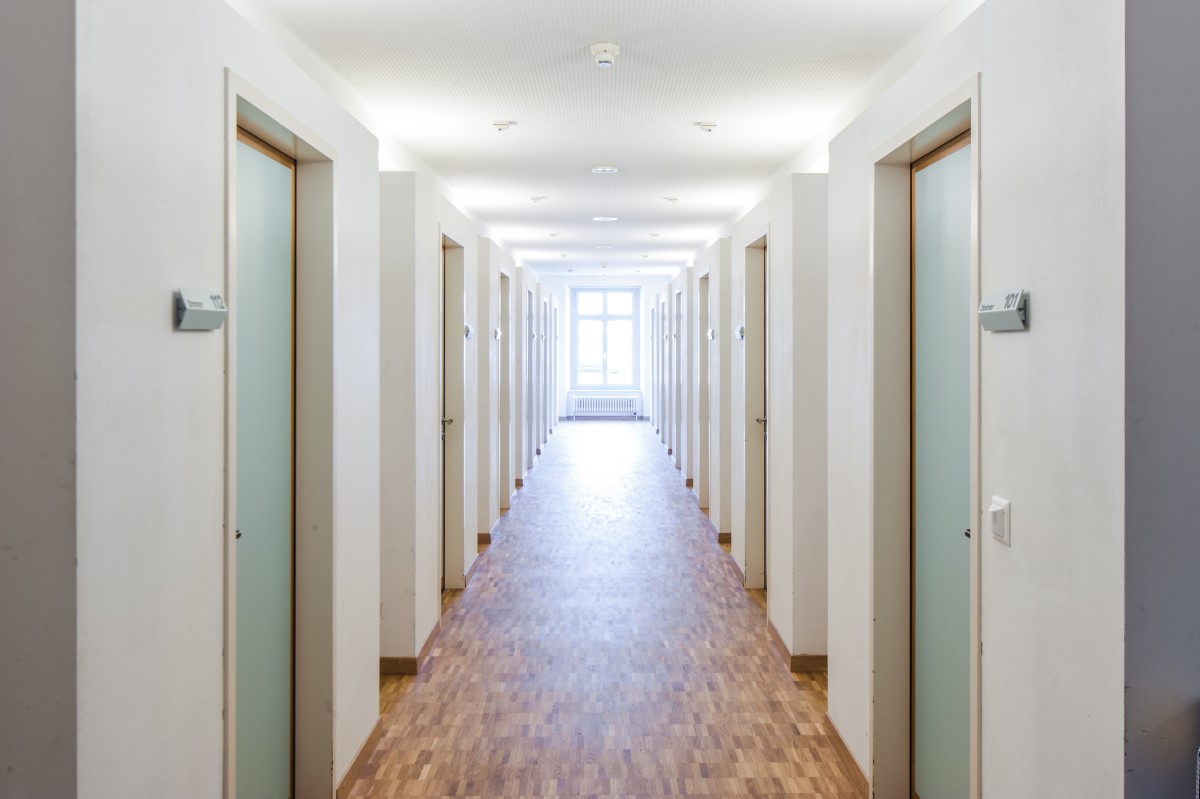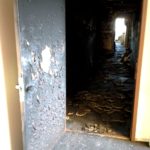 I know that many people think the code development process is as exciting as watching paint dry, but I spend many hours with the BHMA Codes, Government and Industry Affairs Committee proposing and monitoring code changes. I am on the edge of my seat during the hearings where these proposals are discussed and voted on.
I know that many people think the code development process is as exciting as watching paint dry, but I spend many hours with the BHMA Codes, Government and Industry Affairs Committee proposing and monitoring code changes. I am on the edge of my seat during the hearings where these proposals are discussed and voted on.
We are now in the code development cycle for the 2027 model codes – approved proposals will become part of the 2027 editions of the International Building Code (IBC), International Fire Code (IFC), NFPA 101 – Life Safety Code, etc. One proposal caught my eye, and in truth, a little tear leaked out. The proposal is called FS65-24, and you can read it here.
In the 2024 edition of the IBC (and prior editions), Section 716 – Opening Protectives, includes the requirements for fire door assemblies. One of the most important requirements for a fire door is that the door is closed and latched during a fire – this helps to deter the spread of smoke and flames that could pass through an open door. Currently, the IBC states: 716.2.6.1 Door closing. Fire doors shall be latching and self- or automatic-closing in accordance with this section. There are exceptions for communicating doors b etween hotel rooms, storm shelter doors, and one related to certain elevator hoistway doors.
etween hotel rooms, storm shelter doors, and one related to certain elevator hoistway doors.
Proposal FS65-24 would add another exception: Fire doors located in corridors and serving sleeping rooms in Group I-1, Condition 2 shall be permitted without automatic- or self-closing devices.
In the I-Codes, Group I-1 includes alcohol and drug centers, assisted living facilities, congregate care facilities, group homes, halfway houses, residential board and care facilities and social rehabilitation facilities, and here’s how the code defines Group I-1, Condition 2: This occupancy condition shall include buildings in which there are any persons receiving custodial care who require limited verbal or physical assistance while responding to an emergency situation to complete building evacuation.
The most common example of Group I-1, Condition 2 is an assisted living facility. Although the types of living units and services may vary from one facility to the next, my grandmother lived in assisted living and I have visited assisted living apartments in other facilities as well. The buildings I visited were basically multifamily apartment buildings for seniors, typically one-bedroom or studio apartments with kitchenettes. Residents were able to request assistance from staff members for certain tasks – typically non-medical needs like bathing or getting dressed.
According to the IBC, residents of Group I-1, Condition 2 facilities are able to evacuate with limited assistance. Although they may have some physical limitations, they are expected to get themselves out of the building during a fire. For the most part, they are living independently, with some support when they need it.
Currently, the IBC requires doors serving residential dwelling and sleeping units, including assisted living units, to be self-closing, self-latching fire door assemblies. These are typically 20-minute fire doors, which will help to deter the spread of smoke and flames for at least 20 minutes. The proposed change would allow the closing devices to be omitted from assisted living unit entry doors, so the doors will be easier to open. The doors could also be left open for prolonged periods of time, as a resident or staff member would have to close the door manually.
 I understand the reason this change has been proposed. Opening a fire door with a door closer can be difficult for someone with limited strength or who has a disability. BUT – these residents need the protection provided by a closed and latched fire door. In past apartment fires, unit entry doors and other fire doors that were open during the fire contributed to the fire’s spread, sometimes leading to fatalities. A 2004 fire at the Rosepark Care Home in Uddington, Scotland resulted in the deaths of 14 elderly residents. An inquiry found that door closers on many of the unit entry doors had been deactivated or removed at the request of the residents or their families.
I understand the reason this change has been proposed. Opening a fire door with a door closer can be difficult for someone with limited strength or who has a disability. BUT – these residents need the protection provided by a closed and latched fire door. In past apartment fires, unit entry doors and other fire doors that were open during the fire contributed to the fire’s spread, sometimes leading to fatalities. A 2004 fire at the Rosepark Care Home in Uddington, Scotland resulted in the deaths of 14 elderly residents. An inquiry found that door closers on many of the unit entry doors had been deactivated or removed at the request of the residents or their families.
As I shared in a 2022 Decoded article, the NFPA reported that in 2020 there were 86,000 apartment fires in the U.S. – an average of 236 apartment fires PER DAY. This total applies to apartments of all types – not just to assisted living units. But the most common causes of home fires reported by the NFPA could apply to assisted living apartments: cooking, heating, electrical distribution and lighting equipment, intentional fire setting, and smoking materials.
Years ago, patient rooms in hospitals and nursing homes were required to have self-closing or automatic-closing doors. This requirement was removed from the model codes with the addition of increased requirements for automatic sprinkler systems in health care occupancies and the expectation that staff would be trained to close patient room doors if a fire occurred. The model codes no longer mandate 20-minute fire doors for these rooms in hospitals and nursing homes, but positive-latching hardware is required.
Although current codes require assisted living facilities to have sprinkler systems, the staffing levels in assisted living are much lower than in health care facilities. Staffing levels, particularly at night, could impact the process of manually closing any open fire doors in an assisted living facility. For example:
- Health Care Facilities – Staff-to-Patient Ratio: A Critical KPI for Your Healthcare Practice: The ideal staff-to-patient ratio will vary depending on the type of healthcare facility and the needs of the patients. However, in general, a ratio of 1:4 or better is considered to be a good benchmark.
- Assisted Living – Staff to Resident Ratios for Assisted Living: The US Department of Health and Human Services released a study that found that one-quarter of assisted living communities had a ratio of 1 PCA for each 23 or more residents. (PCA=personal care assistant)
There are products available that will close the unit entry door to provide the necessary fire protection, while also meeting the needs of assisted living residents, and I will share those in a follow-up post. But I sincerely hope that the ICC Technical Committee will see the potential dangers that would arise from dwelling unit entry doors (that are supposed to provide fire protection), standing open and allowing smoke and flames to spread, compromising the means of egress.
Thoughts?? Feel free to leave a comment!
You need to login or register to bookmark/favorite this content.










Interesting
Putting more reliance on sprinklers and the systems being maintained.
I wonder as part of the code change if they looked at
History of fires in I-1
Injuries because of fires in I-1, with sprinklers
Deaths because of fires in I-1, with sprinklers
Guess the good thing is may not see in new buildings till 2027 or after
Well, hopefully it won’t be approved. I think it’s a step backward in fire safety. 🙁
– Lori
But, hasn’t it been the practice in hospitals forever?
And the last time I stayed overnight with someone,, there was Bare staff on shift
So lots of doors to close
Anyway, prefer self closing.
Works on the garage personnel door I used to replace the original door.
What month and year are the hearings?
Hi Charles –
It hasn’t been in practice in hospitals/nursing homes forever, at least not where I started my career. Patient room doors used to have automatic-closing devices on them. I’ll give some examples in my follow-up post. The next hearings are in October: https://www.iccsafe.org/events/conference/hearings-ac/.
– Lori
Ok thought it was, even back in the 80’s?
Maybe depended on code book used and state?
Anyway
After doing Fire & Egress Door inspection on a great number of Assisted Living Facilities over the last 4 years I found the mobility of the patients, and the cognition of awareness was minimal. Definitely not enough to be able to evacuate without assistance.
Call me crazy, but I’d rather have the residents behind closed and latched fire doors while they wait for assistance.
– Lori
“The intent of this proposal is to allow for Group I-2, Condition 2 facilities to not require self-closing or automatic-closing corridor doors. The Healthcare committee feels that this will improve patient safety on a daily basis. There is a good balance of passive and active fire protection that will still be in place, and the fire and safety plans can include closing doors.” This reason by the HCC does make daily living comfortable for occupants, visitors, and staff. However, as you have concluded ‘there are products available that will close the unit entry door to provide the necessary fire protection, while also meeting the needs of assisted living residents’. Lets hope the code is not approved, the cost saving shown in the proposal and the convenience afforded by removing self closing device cannot offset the danger of a life lost.
I agree Khozema!
– Lori
I have an idea let’s make a electrified door closer.
I’ll work with the LCN engineers.
It will disengaged the closer spindle with 12/24 VDC when the fire alarm is activated the voltage will drop the spindle/clutch will engage and the door will become self closing self latching. Just thinking outside the box.
I have alot more Idea’s but no one will listen.
Hi Charlie –
Products already exist (and have for decades) that allow the door to be operated manually with almost no resistance; the door can be left open at any position. When the fire alarm is activated, the door closes automatically. I’ll be writing about this option soon.
– Lori
Hi Lori,
Having previously served as a member of code writing bodies, in my experience the question of what motivates the petitioner to submit the requested code change is important in order to separate fact from fiction. In other words, what is written as substantiation of often far from the actual root reason(s).
It is a known fact that most occupants die in a fire from smoke inhalation. Keeping doors closed, especially to sleeping rooms is a fundamental tenant to prevent the spread of smoke and most especially important in buildings with dependent or unrelated occupants. While more and more facilities today are sprinkler protected; sprinklers themselves are not a cure all. Sprinklers were originally invented for property protection. Only in the last 20 years has sprinkler technology evolved to the point where it now can offer a degree of occupant safety. And until the fire has been extinguished sprinklers do nothing to stop the development or spread of smoke.
The sad reality is that even in health care occupancies with a highly educated staff, frequent training, and periodic drills nursing unit fire drill are often executed poorly. Finding from critiques after actual fire incidents frequently note that staff become focused on either extinguishing the fire or rescuing the patient from the room of fire origin… all at the expense of closing patient room doors and ensuring patient safety in other rooms. With this as a known failure point this code change would be recipe for disaster in an occupancy with a seriously lower staff to patient ratio.
It is important to remember that occupants in assisted living facilities, when evacuating the building, still need to pass through and interact with a number of other doors with closers… cross-corridor smoke control doors, possibly a horizontal exit fire door, and usually at least two fire exit doors on every stair. The argument that the patient room door is a hazard to the patient is just smoke and mirrors to what is really the root of the problem behind the requested code change.
What is far closer to the truth is patient room doors are in constant use and suffer from repeated use, abuse, and normal wear and tear. Patients, family, visitors, and even staff will attempt to defeat a door closer for a variety of reasons and by a variety of means. The facility will then receive citations from the fire department, the state, the feds, or an accrediting body. The facility soon gets tired of receiving repeated citations for the same issue related to patient room doors and want a solution to remove patient room doors from their inspection reports. They usually convince themselves the problem is unsolvable. To a certain extent that is true, the problem will remain unsolvable until the facility leadership learns how to properly manage the facility.
Will this proposed code change make it to print? If we look to europe and their DIN standards, not very likely because those standards are objectively written (scientific based). Here in the US our ANSI standards are subjective (political based) so the possibility exists if the petitioner can sway (lobby) the committee to their point of view. The red herring here is CMS as they have previously thrown their weight around when adopting various editions of codes but striking certain paragraphs they dislike or adding certain requirements the code committee failed to approve.
Thanks Larry – I really appreciate you sharing your insight on this. The possibility that this change could be approved scares the heck out of me.
– Lori
In my opinion, this proposal is being pushed forward by the need to save money. The few facilities I have visited already had removed the arms off of the closers. The state fire marshal’s office was even inspecting one while i was there, and he wasn’t concerned at all! Follow the money!!